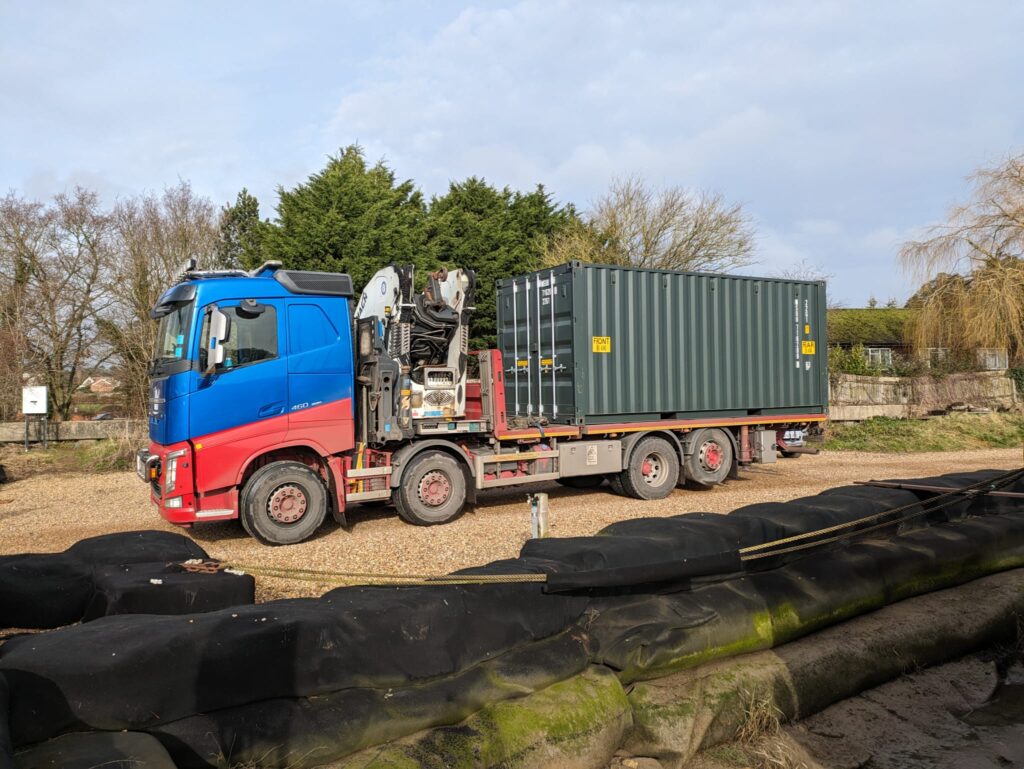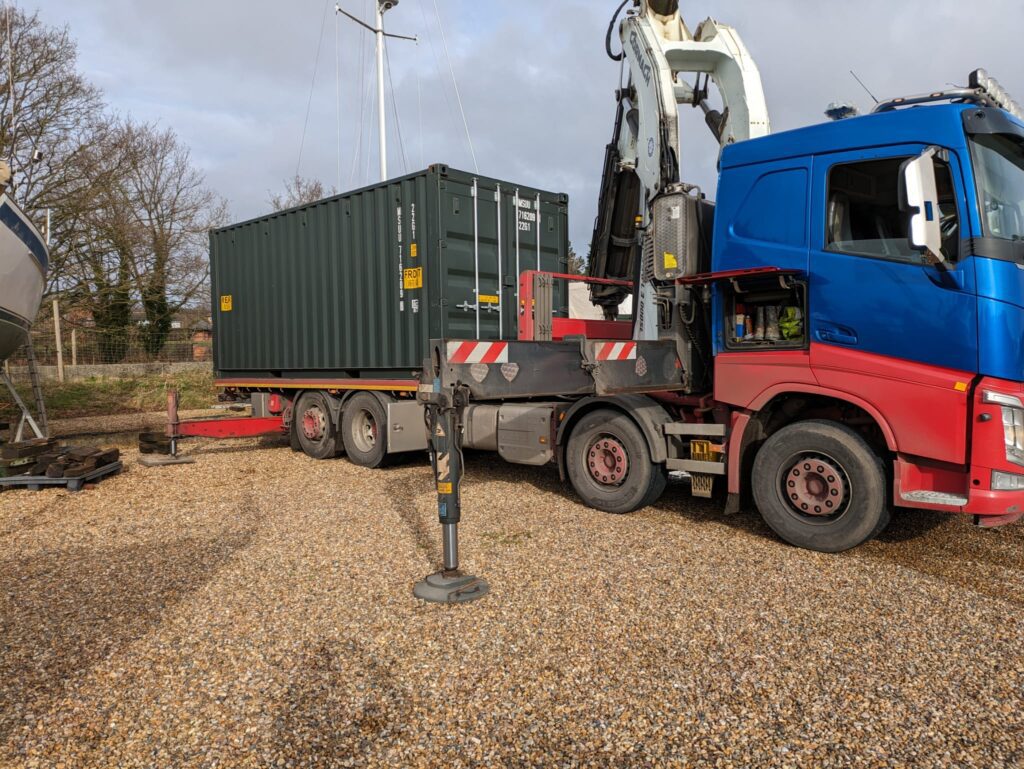Efficient Container Swapping: A Guide for On-Site Exchanges

Last Updated on July 5, 2024
It is important to understand container swapping procedures to keep your personnel safe and ensure our driver can be on and off your site in good time.
The logistics are straightforward but the procedure is time-consuming and needs plenty of space to be carried out.
We have been supplying shipping containers for nearly 15 years and our transport guys are extremely experienced when it comes to loading and unloading shipping containers from their HIAB vehicles.
Understanding the Process
All our containers are delivered and offloaded using a HIAB vehicle. HIAB is a brand name and all our transport companies have these cranes fitted to their vehicles. They are perfect for offloading an empty shipping container to the ground.
Our transport guys use either Artic (60ft long) or Rigid (40ft) vehicles fitted with the HIAB crane. These cranes can ONLY offload the weight of a 20ft or a 40ft shipping container. The rigid vehicles are used for the 20ft container and the artic vehicles are used for the 40ft containers or 2 x 20ft containers.
The containers must be EMPTY when loading and unloading our vehicles.
All vehicles have to extend their outriggers before offloading, to ensure they are stable for this offload procedure. There are 2 outriggers to each side and they will extend 10ft to the side of the vehicle.

This is the vehicle arriving with the new container.

Vehicle with the outriggers to the side.

The driver has to climb onto the container for chaining the container ready for offload.
Each of these photos show the whole procedure for offloading a container from a HIAB vehicle. The time taken can be in the region of 30-60 mins per movement. For container swapping (using the same location) this procedure has to be carried out up to 5 times in all depending on the space available on site.
Preparing for the Swap
You will need to have sufficient space for swapping the container. The area must have a good surface, be stable and accessible. This job can take a while to carry out, depending on the space available to the driver.
Please see our delivery and collection page for more information about your site requirements.
In order to successfully swap a container, there is a procedure to be followed. The new container that is being delivered needs to be offloaded somewhere else, before taking the old container away, then the new container needs to be lifted, moved and positioned in the original location. Every time there is a move, the driver has to put the outriggers off to the side for stability and chain up the container for offloading and or loading onto the vehicle.
Executing the Swap
- The new container will arrive on the HIAB vehicle.
- This container will need to be offloaded somewhere else.
- The vehicle then goes to the old container and lifts the old container onto the vehicle.
- The old container will need to be offloaded somewhere else.
- The vehicle then goes to the new container and lifts the container onto the vehicle and takes it over to where the old container came from.
- The new container is offloaded.
- The vehicle will then lift the old container onto the vehicle ready to take away from the site.
Troubleshooting and Best Practices
One of the common challenges of offloading and loading a shipping container is that on-site personnel can walk or run into the area of offload/loading which can be dangerous. We recommend you advise site personnel of our delivery times before we arrive so that these hazards can be kept to a minimum. It is your responsibility to ensure safety protocols are adhered to.
The containers that are being positioned temporarily must not be blocked in, as this can cause extra time and costs.
Benefits of professional assistance
All our drivers are qualified to handle the HIAB vehicles; however, they do need assistance from your personnel to ensure your staff are kept safe and do not hinder the offloading and loading procedures. Safety is paramount.
Using HIABs (cranes) is the best solution when offloading and loading a shipping container on and off a truck.
Summary
The procedure of swapping a shipping container can take some time and will need sufficient space. Containers being placed in temporary positions must not be blocked in. Site personnel should be kept away from the working areas whilst our driver is offloading and loading a shipping container.
For more information please call us on 0800 121 7388 or email us at sales@billiebox.co.uk

